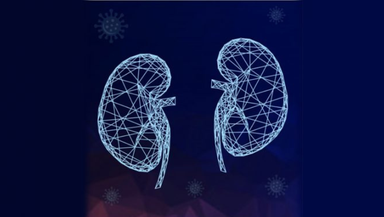Breaking Down Osteoporosis: Understanding Causes, Risk Factors, and Prevention Strategies

Understanding Osteoporosis:
Osteoporosis, often referred to as the "silent disease," is a common yet often overlooked condition characterized by weakened bones, increasing the risk of fractures and mobility limitations. In this comprehensive guide, we'll delve into the intricacies of osteoporosis, exploring its causes, risk factors, prevention strategies, and insights from Dr Brahmaraju, Sr Consultant - Orthopaedics & Joint Replacement Surgery.
Dr Brahmaraju, emphasizes "Osteoporosis is a preventable and treatable condition that requires proactive management and collaboration between patients and healthcare providers. By adopting a bone-healthy lifestyle, prioritizing nutrition and exercise, and seeking regular bone density assessments, individuals can take control of their bone health and reduce the risk of fractures and complications associated with osteoporosis."
Causes and Risk Factors:
Several factors contribute to the development of osteoporosis, including:
- Age: Bone density naturally decreases with age, increasing the risk of osteoporosis, especially in postmenopausal women.
- Gender: Women are at higher risk of osteoporosis than men, primarily due to hormonal changes during menopause.
- Hormonal Imbalance: Reduced estrogen levels in women and testosterone levels in men can accelerate bone loss.
- Genetics: Family history of osteoporosis or fractures may predispose individuals to the condition.
- Lifestyle Factors: Sedentary lifestyle, poor nutrition, smoking, excessive alcohol consumption, and inadequate calcium and vitamin D intake can weaken bones and exacerbate osteoporosis.
- Medical Conditions: Certain medical conditions, such as rheumatoid arthritis, hyperthyroidism, celiac disease, and chronic kidney disease, can increase the risk of osteoporosis.
- Medications: Long-term use of corticosteroids, proton pump inhibitors, and certain cancer treatments can impair bone health and contribute to osteoporosis.
Prevention Strategies:
Preventing osteoporosis begins with adopting a proactive approach to bone health and implementing lifestyle modifications that support bone strength and density. Key prevention strategies include:
- Adequate Nutrition: Consuming a balanced diet rich in calcium, vitamin D, protein, fruits, vegetables, and whole grains supports bone health and mineralization.
- Regular Exercise: Weight-bearing exercises, resistance training, and balance exercises help build and maintain bone density, muscle strength, and coordination.
- Fall Prevention: Minimizing fall risks by ensuring proper lighting, removing hazards, using assistive devices, and practicing safe movement techniques reduces the risk of fractures.
- Smoking Cessation: Quitting smoking and avoiding secondhand smoke exposure promote bone health and reduce the risk of osteoporosis-related complications.
- Limiting Alcohol Intake: Moderating alcohol consumption to recommended limits (1 drink per day for women and 2 drinks per day for men) helps preserve bone density and overall health.
- Bone Density Testing: Periodic bone density scans (DEXA scans) assess bone health and facilitate early detection of osteoporosis, enabling timely intervention and treatment.
Conclusion:
Osteoporosis is a silent yet significant threat to bone health and overall well-being, affecting millions of individuals worldwide. By understanding the causes, risk factors, and prevention strategies associated with osteoporosis, individuals can take proactive steps to protect their bone health and reduce the risk of fractures and mobility limitations. With a multidisciplinary approach to bone health, including regular screenings, lifestyle modifications, and expert guidance from healthcare professionals like Dr Basavaraj, individuals can safeguard their bone health and maintain independence and vitality throughout life.
Specialities
Clear allMeet the doctor

Dr Brahmaraju T J
Orthopaedics and Joint Replacement
MBBS, D Ortho, DNB (Ortho), MS (Ortho), Fellowship in Joint Replacement, Fellowship Arthroscopy (Germany)











